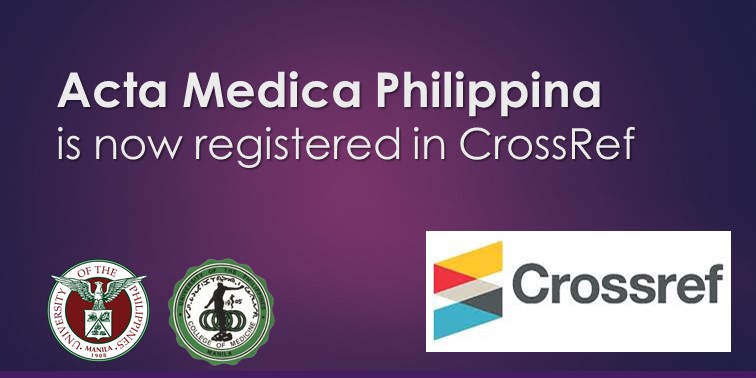Clinical Profile, Surgical Treatment, and Outcomes of Ectopic Pregnancy in a Tertiary Training Hospital in the Philippines
DOI:
https://doi.org/10.47895/Keywords:
ectopic pregnancy, salpingectomy, salpingostomyAbstract
Objective. The study aimed to examine the clinical profile, surgical management, and outcomes of patients admitted for ectopic pregnancy.
Methods. A five-year retrospective study of ectopic pregnancies admitted in a tertiary training hospital in the Philippines was performed. Data from admission and operating room records were used to obtain the annual cumulative incidence of ectopic pregnancy. Subjects were divided into laparotomy versus laparoscopy groups, and salpingostomy versus salpingectomy groups; differences in the means/medians/mean-ranks and proportions of the different clinical and outcome variables of interest were compared by Student t test/Mann-Whitney U test and chisquare/Fisher exact test of homogeneity, respectively.
Results. The cumulative incidence of ectopic pregnancy ranged from 2.30% to 4.01% from 2017 to 2021. A total of 128 patients were included in the final analysis with a mean age of 27.8 ± 5.73 years. The most common identified risk factors were smoking (17.97%), previous ectopic pregnancy (17.19%), and previous tubal surgery (15.62%). The ampulla was the most common site of tubal involvement. Of the 128 patients, 45.31% underwent laparotomy while 54.69% underwent laparoscopy. Salpingectomy was performed in 76.56% of patients. Tubal rupture was noted in 42.97% of cases. Patients with abdominal pain, back pain, shoulder pain, and dizziness were more likely to undergo laparotomy than laparoscopy (p <0.05). A lower β-hCG value was noted in patients who underwent salpingostomy compared to salpingectomy (5,569.80 mIU/mL vs 10,555.47, p <0.05). Salpingostomy was more likely to be performed on patients with previous ectopic pregnancy (p <0.05) and previous tubal surgery (p <0.05) than salpingectomy.
Conclusions. The cumulative incidence of ectopic pregnancy in our institution was higher than global estimates. Risk factors and anatomic site of tubal involvement were similar to those reported in literature. Laparoscopy seemed to be underutilized for cases of ruptured ectopic pregnancy. Training on minimally invasive procedures should be provided to point-ofcare trainees or residents for patients to be afforded the benefits of laparoscopy.
Downloads
Published
Issue
Section
License
Copyright (c) 2025 Acta Medica Philippina

This work is licensed under a Creative Commons Attribution-NonCommercial-NoDerivatives 4.0 International License.




.jpg)



